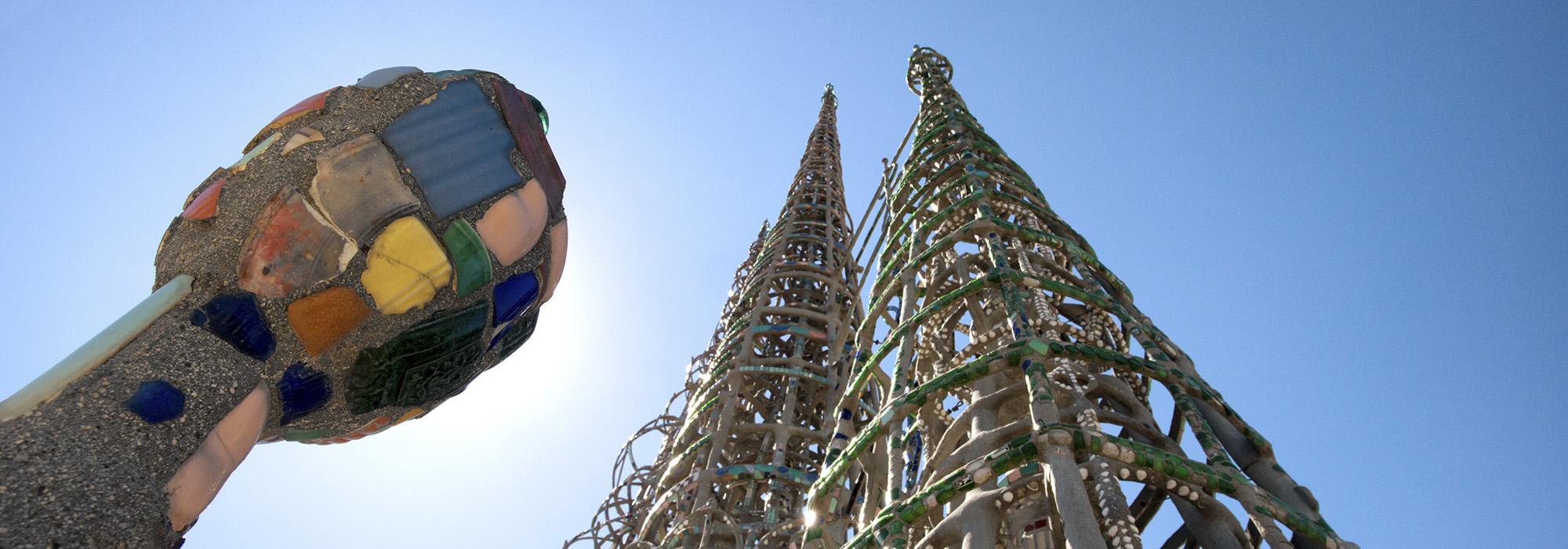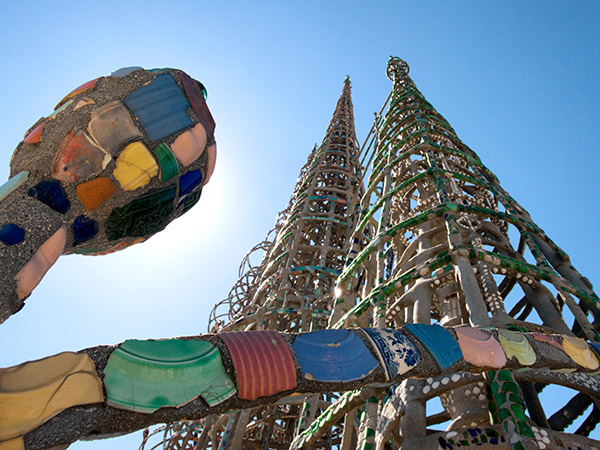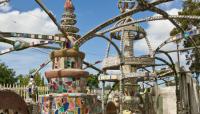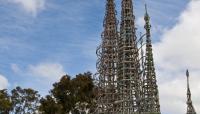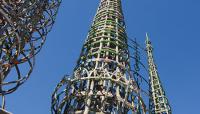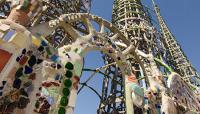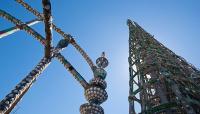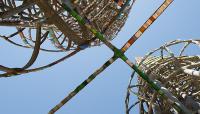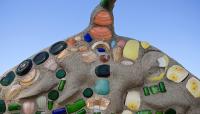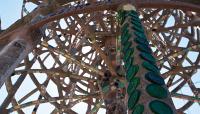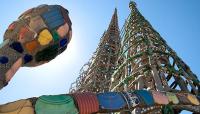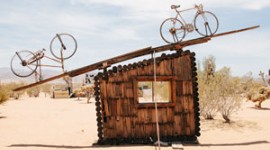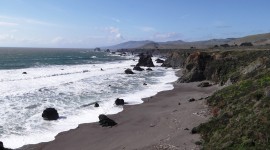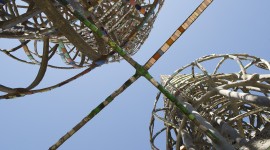Landscape Information
Constructed in a densely urbanized residential neighborhood on a triangular lot measuring one-third of an acre, this assemblage of seventeen vernacular sculptural pieces was created by Italian immigrant Sabato (“Simon”) Rodia. Between 1921 and 1955, Rodia developed the mosaic garden, which included a patio, benches, fountains, pavilions, and towers. Erected without the use of a ladder or scaffold and constructed without bolts, welds, or rivets, Rodia utilized hand tools to fashion the structures from steel rods wrapped in wire mesh and coated with concrete. Three tapered towers, each nearly 100 feet tall, and seven other forms including a gazebo with a 40-foot spire and the “Ship of Marco Polo” were constructed with salvaged steel rods and coated with mortar, into which was embedded colorful glass shards, ceramic tiles, pottery, and marble as well as mirrors, seashells, and rocks. The central tower, connected to its neighboring spire with a string of hearts, utilizes an internal and external framework to create a tower within a tower. The property is surrounded by a seven-foot-tall wall ornamented with pottery, tile, and glass in mosaic forms. Rodia referred to his installation as Nuestro Pueblo, Italian for “Our Town.”
In 1955 Rodia retired and left the property to a neighbor. A year later a fire destroyed Rodia’s home and the City condemned the property and ordered it destroyed. A group of concerned citizens successfully lobbied for its protection and constructed an arts center adjacent to the installation. The installation was added to the National Register of Historic Places in 1977, deeded to the State of California a year later, and designated a National Historic Landmark in 1990.



